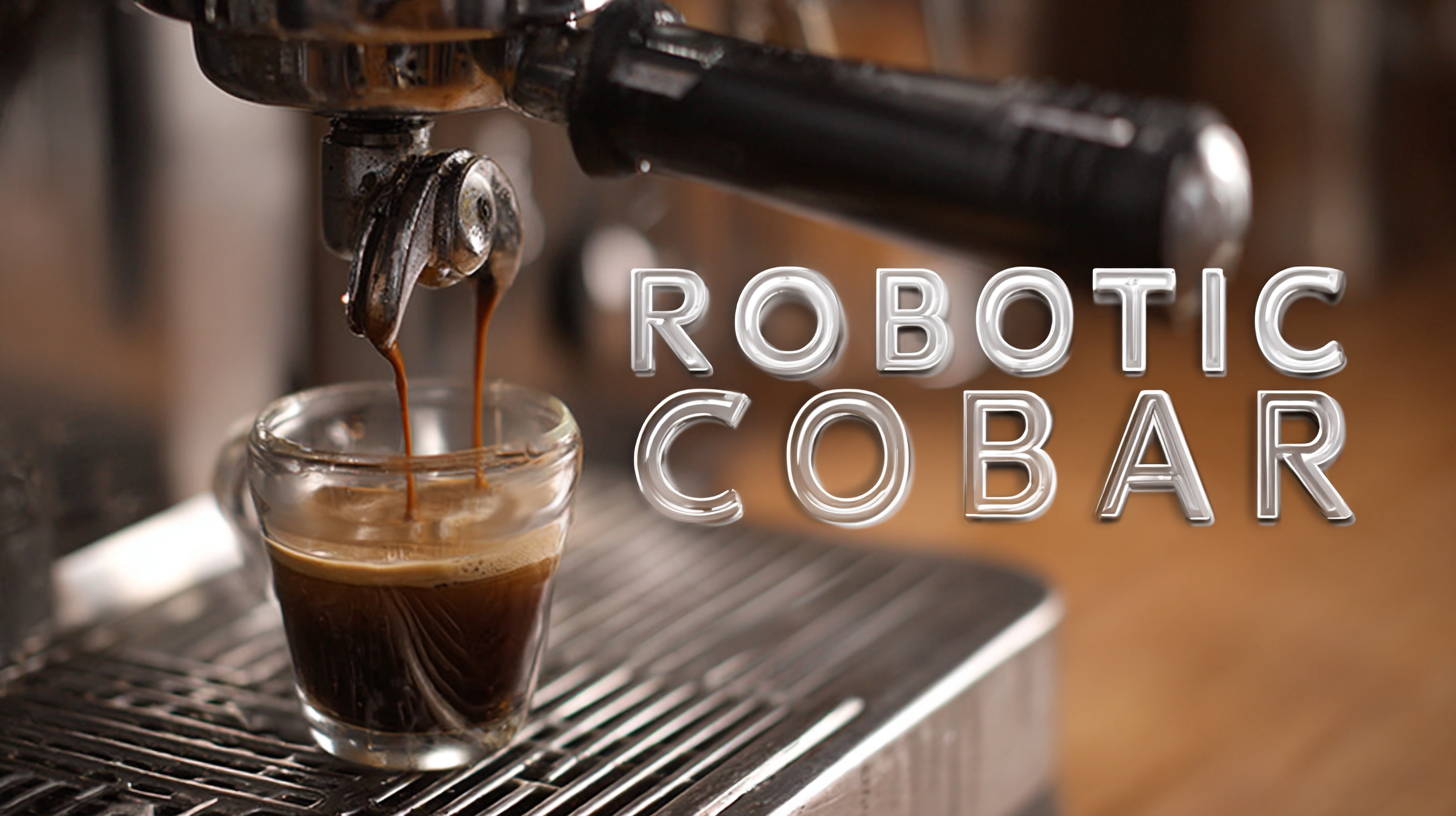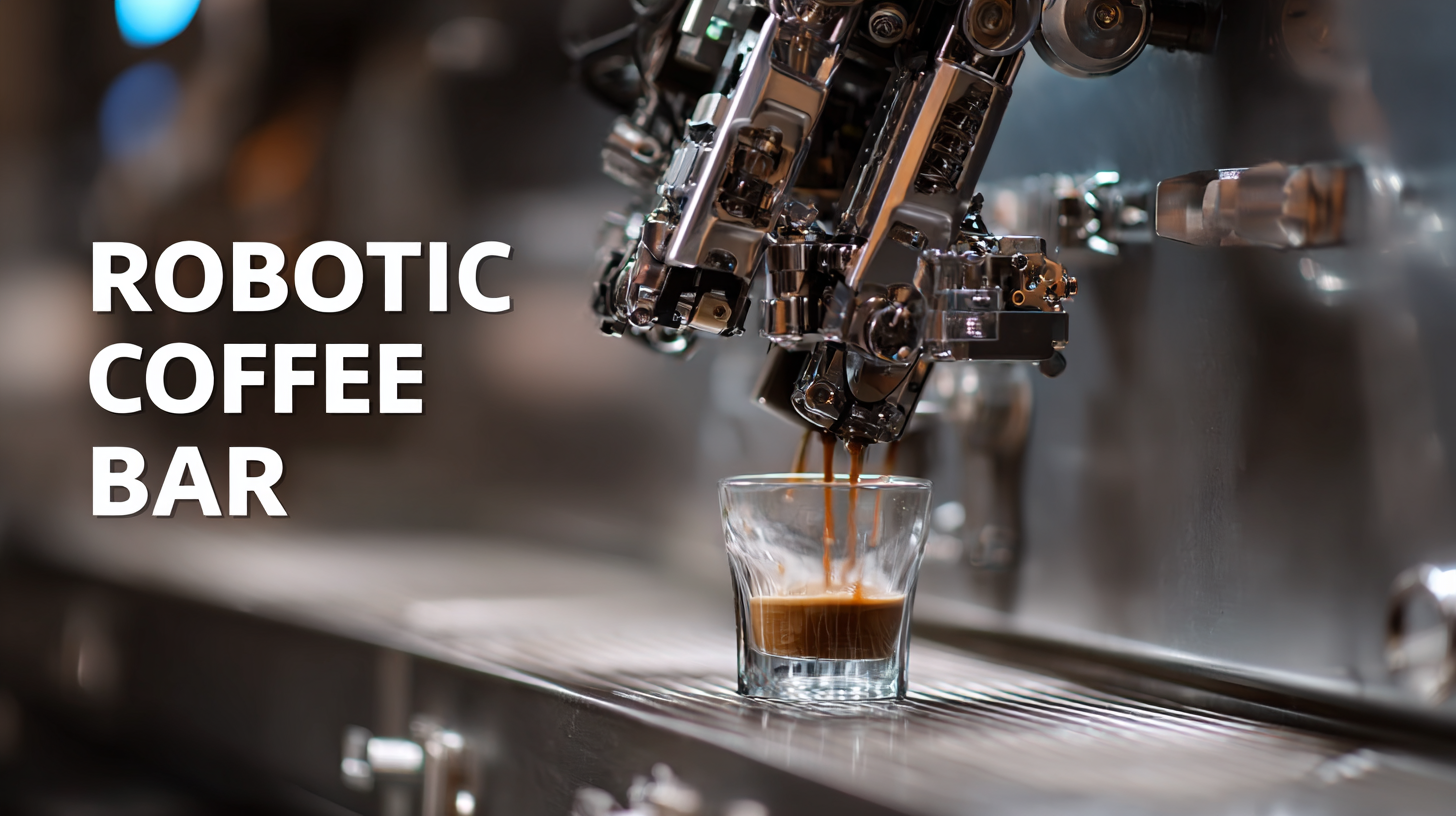Ultimate Guide to Setting Up Your Best Robotic Coffee Bar for Maximum Efficiency
In recent years, the coffee industry has experienced a significant transformation with the advent of technology, leading to the rise of the Robotic Coffee Bar. According to a report from the National Coffee Association, specialty coffee accounts for over 55% of the total coffee market in the United States, highlighting the increasing demand for innovative coffee experiences. As consumer preferences shift towards automation and efficiency, robotic coffee bars are becoming essential for cafes aiming to maximize productivity while ensuring high-quality coffee. A study by QSR Magazine suggests that implementing robotic solutions can enhance service speed by up to 30%, making them vital in a fast-paced market. This ultimate guide delves into the nuances of setting up your own Robotic Coffee Bar, ensuring that you meet industry standards and navigate essential certification processes, which are crucial for a successful launch and sustainable operations.

Understanding the Advantages of Robotic Coffee Bars in Modern Cafés
In the ever-evolving coffee culture, robotic coffee bars are paving the way for efficiency and innovation in modern cafés. A notable trend is the integration of robotics technology that not only streamlines operations but also enhances the overall customer experience. Research indicates that automated systems can reduce operational costs by up to 30%, allowing cafés to allocate resources more effectively while still maintaining high standards of service. This shift towards automation is not merely about replacing human labor but redefining it; as robots handle repetitive tasks, skilled labor becomes increasingly valued in providing personalized service.
Moreover, the introduction of robotic baristas like the Cofe+ showcases the practical advantages of this technology. Offering consistent quality, quick service, and minimal maintenance, such systems represent a significant leap forward in café operations. A study from industry analysts suggests that cafés utilizing automated systems can see a 20% increase in customer throughput during peak hours, highlighting the competitive edge these technologies provide. In an urban landscape where café culture contributes to social sustainability, robotic coffee bars not only meet the high demand for quick and reliable service but also play a vital role in transforming public spaces into vibrant community hubs.
Key Technologies Driving Efficiency in Robotic Coffee Machines
The ever-evolving landscape of robotic coffee machines is heavily influenced by key technologies that drive their efficiency. As the Germany Coffee Machines Market is projected to reach USD 1,125 billion by 2035, with a compound annual growth rate (CAGR) of 3.75% from 2025 to 2035, advancements in automation and artificial intelligence are at the forefront of this growth. These machines integrate sophisticated AI systems to optimize brewing processes and enhance customer interactions. For instance, self-driving robots are now capable of autonomously delivering coffee to customers, showcasing how automation is revolutionizing service in cafés and restaurants.

Moreover, the rise of the robot barista market reflects a significant trend towards fully automated and semi-automated solutions across commercial establishments. As industries adapt to the need for efficiency, the role of AI and robotics becomes increasingly critical. The integration of Internet of Things (IoT) technologies contributes to this shift, allowing for real-time data collection and machine learning applications to better cater to consumer preferences. This technological evolution not only improves operational efficiency but also sets new standards for quality and service in the coffee industry.
Comparative Analysis: Robotic Coffee Bars vs. Traditional Coffee Preparation Methods
The global coffee market is experiencing a remarkable transformation with the rise of robotic coffee bars, contrasting sharply with traditional coffee preparation methods. As the market grows, projected to hit over USD 60 billion by 2033, businesses are increasingly exploring automation to keep pace with consumer demands for efficiency and quality. Robotic coffee bars offer a streamlined experience, minimizing wait times and ensuring consistency in flavor and presentation, which are becoming essential in today's fast-paced environment.
Traditional coffee preparation, while cherished for its artisanal touch, often lacks the speed and precision that modern consumers expect. The comparative efficiency of robotic coffee solutions is compelling; they leverage advanced technology to deliver a high-quality product while optimizing labor costs. As automation becomes more prevalent, it raises questions about the sustainability of traditional methods and how they might adapt to coexist with this burgeoning trend. Ultimately, the coffee landscape is evolving, forcing all players—from small cafes to industry giants—to reconsider their strategies in a rapidly changing market.
Efficiency Comparison: Robotic Coffee Bars vs. Traditional Coffee Preparation
Cost-Benefit Evaluation: Investment and ROI for Robotic Coffee Setup
Investing in a robotic coffee bar can fundamentally transform the efficiency of any coffee-centric business. According to a report by the National Coffee Association, the coffee industry has seen a 60% increase in demand over the past decade, with specialty coffee growing at an impressive rate of 20% annually. By integrating robotics into coffee service, businesses can significantly reduce labor costs while enhancing customer experience. For instance, a robotic coffee setup can operate with a staffing cost reduction of up to 30%, translating to thousands in savings annually.
The return on investment (ROI) for such a setup can be substantial. A study from the International Journal of Hospitality Management indicates that automating coffee service can lead to a payback period of as little as 18 months, depending on initial investment and operational scale. Furthermore, enhanced speed and consistency in beverage preparation can lead to an increase in customer turnover by up to 15%, driving sales growth significantly. Consequently, while the initial investment may seem daunting, the long-term cost savings and revenue increase more than justify the shift toward automation in the coffee business.
Ultimate Guide to Setting Up Your Best Robotic Coffee Bar for Maximum Efficiency - Cost-Benefit Evaluation: Investment and ROI for Robotic Coffee Setup
| Dimension | Details |
|---|---|
| Initial Investment | $30,000 |
| Monthly Operating Cost | $500 |
| Average Daily Sales | $1,200 |
| Annual Revenue | $438,000 |
| Break-even Point (Months) | 25 |
| Total Monthly Profit | $14,500 |
| Estimated ROI (1 Year) | 240% |
| Customer Satisfaction Rating | 4.8/5 |
Future Trends: Innovations in Robotics Shaping the Coffee Industry
As the coffee industry evolves, robotics is at the forefront of innovation, redefining how coffee is brewed and delivered. According to a recent report by Mordor Intelligence, the global coffee machine market is expected to reach $4.6 billion by 2026, driven largely by advancements in automated technology. This surge indicates a shift towards robotic systems that enhance efficiency and consistency, ensuring that customers receive the same high-quality experience every time.

Robotic baristas are becoming increasingly popular in cafés and restaurants, streamlining operations and cutting labor costs. For instance, a study from the International Coffee Organization highlights that robotic solutions can boost service speed by up to 30%, addressing the growing demand for quick service without compromising quality. Additionally, innovations such as AI-driven brewing techniques and smart ordering systems are not only improving customer satisfaction but also contributing to sustainability by minimizing waste. As more coffee businesses capitalize on these trends, the integration of robotics will undoubtedly play a crucial role in shaping the future landscape of the coffee industry.